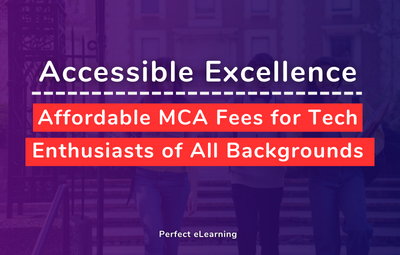

In the realm of digital products and services, user experience design focuses on creating meaningful and enjoyable interactions between users and interfaces. It encompasses various elements, including usability, accessibility, visual design, and interaction design, all aimed at providing a seamless and satisfying experience for the end-user.
Importance of UX Design for MCA Graduates
As an MCA graduate, incorporating UX design principles into your work can give you a competitive edge in the industry. By prioritizing user satisfaction and addressing their needs, you can create products and services that stand out from the crowd. With the growing emphasis on user-centric design, companies are actively seeking professionals who can craft engaging experiences that drive customer loyalty and business success.
Understanding User-Centered Design
Definition of User-Centered Design
User-centered design places the user at the core of the design process. It involves empathizing with users, understanding their goals and behaviors, and tailoring the design to meet their needs. By adopting a user-centered approach, you can create interfaces that resonate with your target audience and provide meaningful solutions.
Researching User Needs and Behaviors
To design user-centric interfaces, it is essential to gather insights into user needs and behaviors. This involves conducting user surveys, interviews, and analyzing user data and feedback.
Analyzing User Data and Feedback
Apart from surveys and interviews, analyzing user data and feedback from existing products or services can provide valuable insights. User analytics tools and customer support channels can help you understand user behaviors, identify pain points, and uncover areas for improvement.
Creating User Personas
User personas are fictional representations of your target users. They help you understand user goals, motivations, and preferences. By creating detailed user personas, you can empathize with your audience and design interfaces that cater to their specific needs.
Information Architecture and Wireframing
Information architecture and wireframing are crucial steps in the UX design process. They involve organizing content, defining navigation, and creating low-fidelity wireframes to visualize the structure and layout of your interfaces.
Organizing Content and Navigation
Clear and intuitive content organization is essential for users to navigate through your interfaces seamlessly. By employing techniques like card sorting and user flow mapping, you can ensure logical and structured information architecture that aids user comprehension.
Designing Low-Fidelity Wireframes
Wireframes act as blueprints for your interfaces, outlining the placement of elements and interactions. Low-fidelity wireframes allow you to focus on the overall structure and flow without getting distracted by visual details. They provide a solid foundation for the subsequent design stages.
Mobile and Responsive Design
Adapting Designs for Different Devices
Mobile and responsive design involves adapting your interfaces to fit different screen sizes and orientations. This ensures that users can access your interfaces comfortably and efficiently, regardless of the device they are using.
Ensuring Mobile-Friendly Interfaces
Mobile-friendly interfaces prioritize simplicity, minimalism, and touch-friendly interactions. By optimizing your interfaces for mobile devices, you can provide a smooth and engaging experience for users on the go.
Interaction Design and Microinteractions
Designing Intuitive Interactions
Intuitive interactions allow users to achieve their goals effortlessly. By employing familiar interaction patterns and minimizing cognitive load, you can create interfaces that feel natural and intuitive to use.
Accessibility and Inclusive Design
Accessibility and inclusive design ensure that interfaces are usable by all individuals, including those with disabilities. By considering accessibility standards and inclusive design principles, you can create interfaces that cater to a diverse range of users.
Designing for All Users
Designing for accessibility involves considering factors such as color contrast, font size, screen reader compatibility, and keyboard navigation. By prioritizing accessibility, you ensure that your interfaces can be accessed and used by individuals with visual, auditory, or mobility impairments.
Implementing Accessibility Standards
Adhering to established accessibility standards, such as the Web Content Accessibility Guidelines (WCAG), helps ensure that your interfaces meet the needs of a broad user base. By making your interfaces more accessible, you provide equal opportunities for all individuals to engage with your products or services.
UX Design Tools and Technologies
Various UX design tools and technologies can assist you throughout the design process, from research and wireframing to prototyping and collaboration. Familiarizing yourself with these tools can streamline your workflow and enhance your design capabilities.
Overview of UX Design Software
UX design software, such as Sketch, Adobe XD, or Figma, provides robust capabilities for creating high-fidelity designs, interactive prototypes, and design system libraries. These tools enable you to bring your design concepts to life and iterate on your interfaces efficiently.
Building a UX Portfolio for MCA Graduates
A strong UX portfolio is crucial for MCA graduates looking to establish themselves in the industry. It showcases your design skills, thought processes, and the impact of your work. Here are some tips for building an impressive UX portfolio:
Showcasing UX Design Projects
Include a diverse range of UX design projects in your portfolio that highlight your ability to solve complex problems and deliver exceptional user experiences. Provide detailed case studies that outline your design process, challenges faced, and the outcomes achieved.
UX Design Roles and Responsibilities
UX design offers various roles, including UX designer, interaction designer, information architect, user researcher, and UX/UI developer. Each role involves different responsibilities, but they all revolve around creating exceptional user experiences through research, design, and usability testing.
Conclusion
User experience (UX) design is a vital aspect of modern product and service development. For MCA graduates, acquiring and honing UX design skills can open doors to exciting career opportunities. By understanding user needs, employing user-centered design principles, and creating intuitive and engaging interfaces, you can craft exceptional user experiences that leave a lasting impact.
FAQs (Frequently Asked Questions)
Q: What skills do I need to become a UX designer?
A: To become a UX designer, you should have a strong understanding of user research, information architecture, interaction design, visual design, and usability testing. It is also beneficial to have knowledge of UX design tools and technologies.
Q: How long does it take to learn UX design?
A: The time required to learn UX design depends on various factors, including your prior knowledge, learning approach, and dedication. It can range from several months to a few years. Continuous learning and hands-on experience are key to becoming a proficient UX designer.
Q: Can I transition to UX design from a different field?
A: Yes, it is possible to transition to UX design from a different field. Many UX designers come from diverse backgrounds. Building a solid portfolio, acquiring relevant skills, and demonstrating a passion for user-centered design can help you make a successful transition.
Q: Is coding knowledge necessary for UX design?
A: While coding knowledge can be beneficial, it is not mandatory for UX design. UX designers primarily focus on research, design thinking, and creating user-centered experiences. However, having a basic understanding of HTML, CSS, and JavaScript can be advantageous when collaborating with developers.


